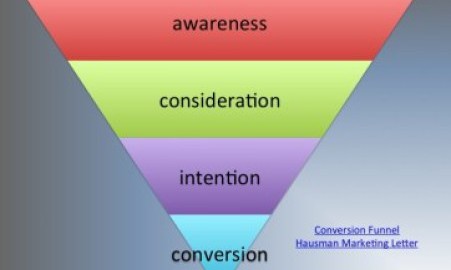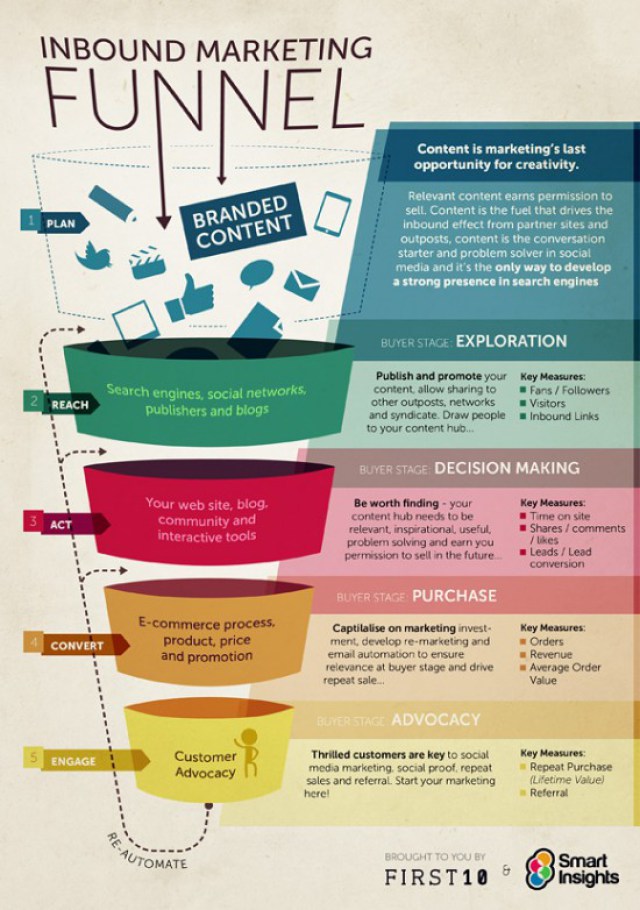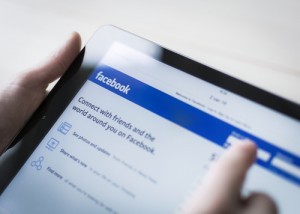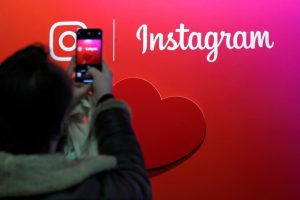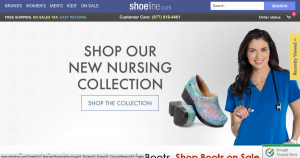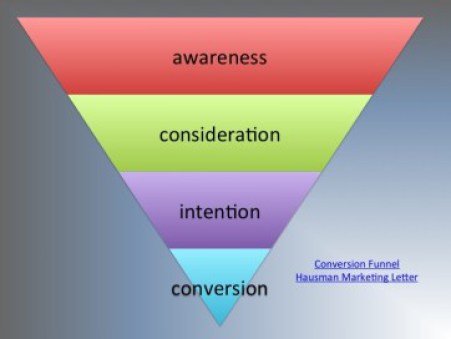
I found the following infographic on content marketing throughout the marketing funnel from Smart Insights — which has some great templates and training (with membership), as well as free resources. I think the infographic contains some valuable ideas, but I also think there’s much-needed to optimize content marketing throughout the marketing funnel. So, here I go with my own ideas.
The marketing funnel
The notion of a marketing funnel dates from early in the history of marketing, although it was often called the sales funnel then and some leaders argue there’s no distinction between marketing and sales funnels while others contend the marketing funnel is no longer valid because the conversion process isn’t linear. Google prefers the term “conversion funnel”. To my way of thinking, these semantic differences don’t amount to much. So, I’m going to use the term marketing funnel here to represent all these terms.
A variety of interpretations and consumer stages make up the marketing funnels you’ll find across the internet and in textbooks, but I don’t find the difference make much difference in appropriate marketing strategy at each stage. My own version of the marketing funnel is the one at the top of this post.
Generally, the marketing funnel reflects stages in the customer journey — from initial awareness of your brand to purchase. The marketing funnel gets it funnel shape because there’s a huge drop, with fewer prospects making it down to the next stage. Today, we commonly extend the marketing funnel to consider repeat purchases (and the factors contributing to such purchases) as well as other post-purchase behavior, including advocacy (often termed evangelism).
Content marketing throughout the marketing funnel
In my last post, I discussed why you need a variety of content types in your content marketing strategy to meet the needs of visitors at various stages in the marketing funnel. Be sure to read this earlier post to supplement what I talk about today.
Today, I’d like to focus on inbound marketing that supports content marketing throughout the marketing funnel, as opposed to the actual content you create for different stages. So, without further ado, let’s head down the rabbit hole, or, in this case, the marketing funnel.
Awareness — or exploration
The consumer decision-making process is a little too rational for my tastes. I talk about this here because it impacts how consumers move down the marketing funnel — in fact, it’s the engine driving consumers down the funnel. The consumer decision-making process starts with a consumer recognizing they have a problem, they then search for a solution, compare alternatives, then make a selection.
I would argue, and have repeatedly in some of the top marketing journals, that this rational process may describe some planned purchases — such as buying a new car or other high involvement purchase. But, many times we’re not actively aware we have a problem until someone provides a solution. Such was the case when Chrysler introduced the minivan — folks didn’t know they had a problem until they saw the solution. My client, hexsee, has a similar situation. hexsee provides true social interactivity by creating private layers where groups can comment right over web content; eliminating cutting and pasting URLs into email or social networks every time you want your friends/ family to comment on a purchase option, plan an event, or discuss a news/sports item. People don’t realize how annoying and ineffective cutting and pasting are until they see the hexsee solution! They just put up with it.
So, attracting attention at the awareness stage often means reaching people who aren’t looking for you. And, content marketing, because it’s the new SEO (search engine optimization), fills this need. The trick is to show up when your target audience (personas) searches for alternatives to your product.
On Hausman Marketing Letter, I know my target customer isn’t searching for a digital agency, they’re looking for information about doing digital marketing. So, that’s what I give them — although I end each post with a CTA (call to action) so they know I’m available if they want to hire someone to manage their digital marketing. For hexsee (yes, it’s not a typo that the brand isn’t capitalized), we blog about our team, our start-up journey, and searches our target personas likely use — such as vacation planning, wedding planning, online shopping, online education … We’re gonna show up in your searches even when you’re not looking for us.
That doesn’t mean you can just talk about anything — your content must relate to your brand or your target market. In fact, Facebook is cracking down on spam links from brand pages because they are annoying to users.
You want to attract attention at the awareness stage outside of your website. Building brand pages on Facebook and Google+ and a company Twitter amplify your content through social engagement and attract attention for the curated content you share. The trick with any content marketing, especially at the awareness stage, is providing value to readers.
Decision making
Finding your brand is only the first step. Decision making is where the rubber meets the road. You must convince prospects your brand offers what the need. My last post talked about using influence at this stage and recommendations from friends/ family is one of the strongest motivators of purchase.
Therefore, user-generated content makes an especially good tool at the decision-making stage because it involves a friend’s endorsement of the product.
Another powerful tool aiding consumers at the decision-making stage is reputation. A brand develops a reputation (good or bad) based on a variety of factors. Here are just a few of them:
- product performance and quality
- superior customer service
- ability to generate positive reviews
- quickly handling negative reviews or comments
- generating consistent, high value content
Purchase
Interestingly, the purchase stage relies on traditional content marketing the least of any stage in the marketing funnel.
Once the decision is made, consummating a purchase relies on a firm’s ability to eliminate or reduce factors making it difficult for consumers to buy. A good example is Amazon’s 1-click purchase option. Amazon data showed a significant increase in shopping cart abandonment (a drop off between making the decision-making and purchase stages of the marketing funnel) for each click required to consummate the sale.
Here are some other factors that reflect a failure to launch for purchases:
- Poor user experience — pages that load slowly, incorrect transition between pages
- Confusing or multiple CTA buttons
- CTA buttons difficult to identify
- Requiring registration when not critical for the sales process — ie. buying a plane ticket on Orbitz doesn’t require you create an account
- Requiring excess information upon registration or ordering
- Not offering a variety of payment options
Remarketing and email marketing help at the purchase stage because sometimes all that’s missing is the motivation or time to order the product now. Reminding consumers they want your product (and giving them a little incentive — like a coupon) goes a long way toward closing the deal.
Advocacy
Advocacy likely pays higher dividends than any other stage in the marketing funnel.
- Advocates amplify your market messaging by sharing, commenting, liking
- Advocates answer customer questions when your customer reps are busy
- Advocates create user-generated content
- Advocates counteract customer complaint by showing why problems weren’t caused by the brand
- Advocates encourage others to purchase your brand
Business Articles | Business 2 Community
(794)
Report Post